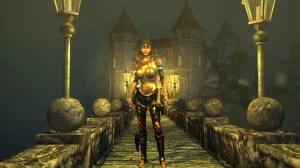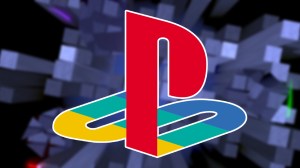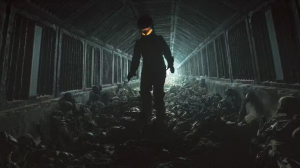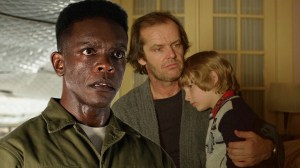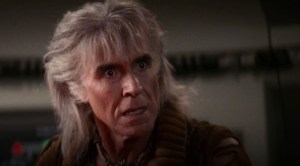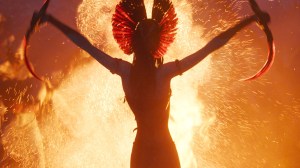Twenty years. Two decades. In the vast and ever-expanding galaxy of Star Wars, that’s an eternity. It’s long enough for empires to rise and fall, for Jedi to become ghosts, and for fan-favorite characters to etch themselves into the very fabric of the saga. And yet, despite two decades of unwavering popularity, critical acclaim, and a narrative brimming with untapped potential, one of Star Wars’ most beloved characters, Ahsoka Tano, has been consistently overlooked when it comes to her own original comic series. It’s not just time; it’s long past time for the former Padawan of Anakin Skywalker to finally headline a comic run that delves into new stories and adventures beyond the adaptations we’ve seen.
Videos by ComicBook.com
A Character Forged in the Fires of the Clone Wars Captured the Hearts of Millions
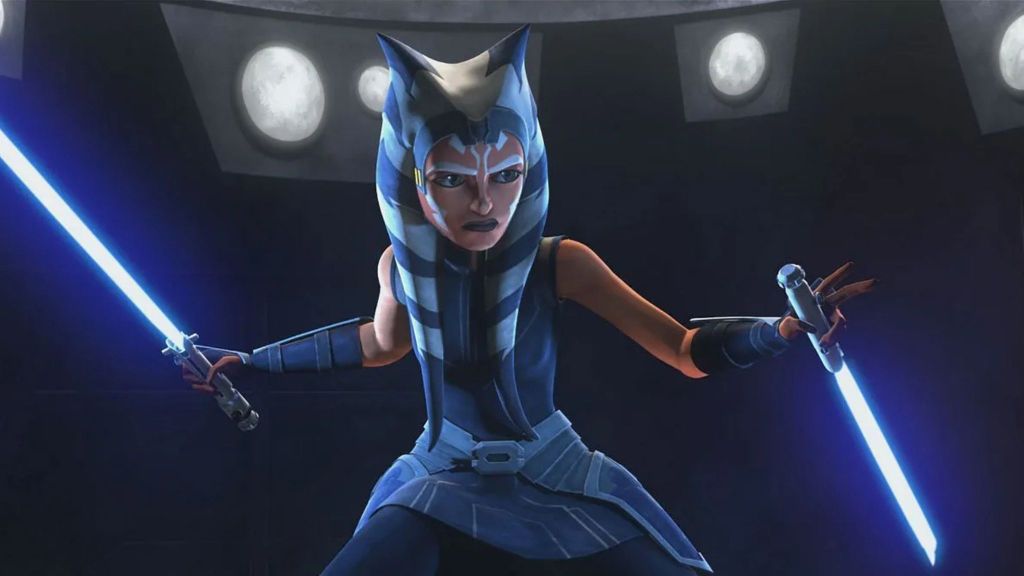
Ahsoka Tano isn’t just another face in the crowded Star Wars universe. Her journey, beginning in 2008 in the animated series The Clone Wars, has resonated deeply with audiences of all ages. Initially met with skepticism by some who viewed her as an unnecessary addition or a distraction from the core Skywalker saga, Ahsoka (voiced by Ashley Eckstein) quickly blossomed into a complex and compelling character who defied initial expectations. Her fiery spirit, often clashing with the rigid protocols of the Jedi Order, her unwavering loyalty to her friends and her master, and the profound emotional impact of her eventual disillusionment with the very institution she believed in forged a connection with viewers that few other characters have achieved. She became a symbol of resilience in the face of overwhelming odds, an embodiment of independence as she created her own path in the galaxy, and a poignant reminder of the nuanced shades of gray that existed in the seemingly black and white conflict of the Clone Wars.
The numbers speak for themselves, echoing across fan forums, social media trends, and merchandise sales. Ahsoka consistently ranks high in fan polls and character popularity surveys, often placing above iconic figures from the original trilogy. Her return in Star Wars Rebels after years of absence was met with fervent enthusiasm, confirming her enduring appeal and the anticipation for further chapters in her story. The leap to live-action in The Mandalorian, portrayed by Rosario Dawson, sent shockwaves of excitement through the entire Star Wars fanbase, bridging the gap between animation and live-action in a way that few characters have managed. The subsequent Ahsoka Disney+ series, finally giving her center stage in a live-action format, further cemented her status as a central figure in the post-Return of the Jedi era, proving her ability to carry her own story and attract a significant viewership.
RELATED: Star Wars Fans Need to Watch These Clone Wars Episodes for the Revenge of the Sith 20th Anniversary
This enduring popularity isn’t a fleeting trend tied to a single series; it’s a testament to the character’s rich development over multiple seasons of animation and her seamless integration into the live-action universe, fueled in no small part by the consistent and passionate portrayal across different mediums and Dave Filoni’s guidance.
This deep connection has also extended beyond the fictional character to Ashley Eckstein herself, who has become a beloved and respected figure within the Star Wars fandom. Her genuine passion for Ahsoka, her insightful commentary on the character’s themes, her active engagement with the community through conventions, social media, and her Her Universe fashion line, have solidified her role as more than just a voice actress; she is seen as a champion of the character and a vital part of the Ahsoka Tano phenomenon. Her popularity within the fandom is a direct reflection of the impact her early portrayal had on shaping the character’s identity and resonating with audiences.
Untold Chapters in Ahsoka’s Life Provide the Perfect Groundwork for Comic Book Storytelling

This massive popularity isn’t just a feel-good metric; it translates directly into potential for compelling storytelling in the visually dynamic and narratively flexible comic book medium. Ahsoka’s life is rife with unexplored avenues; significant gaps in her timeline that beg to be filled with compelling plots. The period between her heartbreaking departure from the Jedi Order at the end of The Clone Wars, a moment of profound disillusionment and forced independence, and her eventual reappearance as the mysterious Fulcrum agent in Star Wars Rebels is a particularly fertile ground for new adventures. What were her immediate struggles as a lone figure in a galaxy consumed by war? Who did she encounter on her solitary journey (a sidestory relating to that very question can be found in EK Johnston’s YA novel, “Ahsoka”)? What formative experiences, both triumphant and traumatic, shaped the independent and formidable figure we see later in Rebels, a character hardened by experience yet still carrying the weight of her past? Dedicated comic series could delve into these crucial lost years, offering fans crucial insights into her evolution from a Padawan betrayed by her order to a key player in the early rebellion.
The post-Return of the Jedi galaxy, where Ahsoka currently operates in live-action as seen in The Mandalorian and her own series, is brimming with possibilities for new and engaging storylines. The fragile peace following the fall of the Empire, the insidious rise of the First Order in the shadows, the lingering threats of scattered Imperial remnants clinging to power, and the mysterious emergence of new Force-sensitive individuals across the galaxy all provide a dynamic and politically charged backdrop for her continued adventures.
Consider the potential for Ahsoka to confront threats that require her particular blend of wisdom, hard-won experience, and formidable combat prowess; challenges that go beyond the scope of the television series. The potential for compelling crossover events with other popular characters from the New Republic era, including Luke Skywalker and Princess Leia, is also incredibly enticing, offering opportunities for dynamic team-ups and the exploration of shared themes within the evolving galaxy.
RELATED: Star Wars Women Power Ranking: From Force-Wielders to Rebel Leaders
The comic book format offers a unique and powerful platform for exploring the often-unseen inner world of a character as complex as Ahsoka. Through the skillful use of internal monologues and visual storytelling, creators could delve deeper into her intricate thoughts, her lingering trauma from the Clone Wars and the betrayal she experienced, her grief over losing Anakin, her evolving and nuanced understanding of the Force that transcends the traditional Jedi and Sith dichotomy, and her personal philosophies on justice, balance, and the nature of good and evil. Comics can also experiment with different narrative structures, such as flashbacks, offering a fresh and multifaceted perspective on a character we already know and love from the screen. This artistic freedom allows for a more intimate and introspective exploration of Ahsoka’s character than the constraints of live-action or even animation might allow.
The Sole Solo Comic Thus Far Merely Adapted a Story Already Told on Screen
It’s important to acknowledge that Ahsoka has appeared in the pages of Star Wars comics before. She played significant and often pivotal roles in various Clone Wars and Rebels tie-in comic series, expanding upon storylines and providing additional context to events seen on screen. Her journey and key moments have also been chronicled in graphic novel adaptations of her animated appearances, offering fans a different way to experience those familiar stories.
However, the crucial and often overlooked distinction lies in the vital word “original.” To date, the only solo comic Ahsoka has received, a eight-issue miniseries, is a direct adaptation of her recent and well-received Disney+ series. While this adaptation undoubtedly served to retell a story already experienced by a significant portion of the fanbase in a different medium, it didn’t break any new ground or offer dedicated fans the original, standalone adventures and explorations of her character that her enduring popularity truly warrants. It was a retelling, not a new chapter.
This reliance on adaptation, while perhaps commercially safe, is a significant missed opportunity to truly engage and reward Ahsoka’s dedicated and passionate fanbase. These are fans who have followed her journey for two decades, through multiple animated series, a live-action appearance, and her own streaming show. They are hungry for new stories, for exciting explorations of the uncharted territories within her established timeline, and for fresh perspectives on her evolving role in the galaxy. They crave the thrill of discovering new facets of her complex personality, witnessing her navigate entirely new challenges that haven’t been hinted at or fully explored on screen, and encountering original characters and threats that could further enrich her already rich lore. An original comic series wouldn’t just be a potential commercial success, tapping into an already established and enthusiastic audience; it would be a genuine and meaningful service to a dedicated fanbase who have championed this character for two decades, consistently expressing their desire for more of her story.
The compelling case for a dedicated and original Ahsoka Tano comic series is not just strong or logical; at this point, after all this time, it’s undeniably overdue. After twenty years of captivating audiences, evolving as a character, and becoming a cornerstone of modern Star Wars storytelling, Ahsoka Tano has more than earned her rightful place as the headliner of her own original comic book adventures; a series that can finally delve into the vast potential of untold stories that await. The devoted fans are more than ready. The time is now, and arguably, it has been for quite some time.

